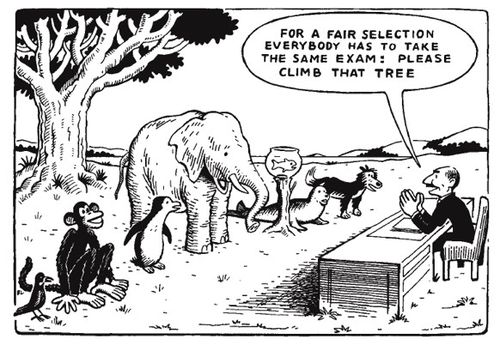Equity is giving everyone what they need to be successful. Equality is treating everyone the same.
“Everybody is a genius. But if you judge a fish by its ability to climb a tree , it will live its whole life believing that it is stupid.”
-Albert Einstein

6 Steps Toward Equity
Know every child:
At SRM Sainik Academy we know each student as a unique and layered individual through a student orientation program, which helps us to learn where they’re from, what they love to do outside the school, and what their family is like. The more we know, the more we can build trust and differentiate instruction.
Celebrate their potential:
We expect a great deal of their students, convince them of their own brilliance, and help them to reach their potential in a disciplined and structured environment. An equity stance pushes us to couple high expectations with a commitment to every child’s success.
Recognizing their challenges:
As we gather a student’s human story, start to piece together his or her learning story:
How does she approach tasks?
What are his strengths as a learner?
What does she struggle with?
No standardized test will provide you with quality data on these questions. We use proximity and lean-in assessment to diagnose students’ learning needs. We carry a clipboard with us while students are working, and take careful notes on what we observe.
Flex our routines:
We remember that one-size lessons do not fit all. We will be willing to flex or set aside our well-laid plans to individualize instruction.
Making it safe to fail:
We teach students that failure is just another form of data. When a child feels shame about his learning gaps, he’ll hide behind quiet compliance or bravado and acting out. In an equitable classroom, there’s no need to hide, because struggle and failure are neutralized, normalized, and even celebrated. Consider this: once a week, we have students meet in groups to share something they struggled with and what they learned in the process.
Viewing culture as a resource:
Finally, don’t be culture-blind. When we ignore students’ identities, we efface who they are in the world and lose a rich resource for learning. We understand this simple, powerful truth offered by Zaretta Hammond in her recent book Culturally Responsive Teaching and the Brain: “Culture, it turns out, is the way every brain makes sense of the world.” Help students activate their cultural schema to access challenging content. Invite them to share where they come from, not just with you, but also with each other. Value and affirm all forms of difference.
